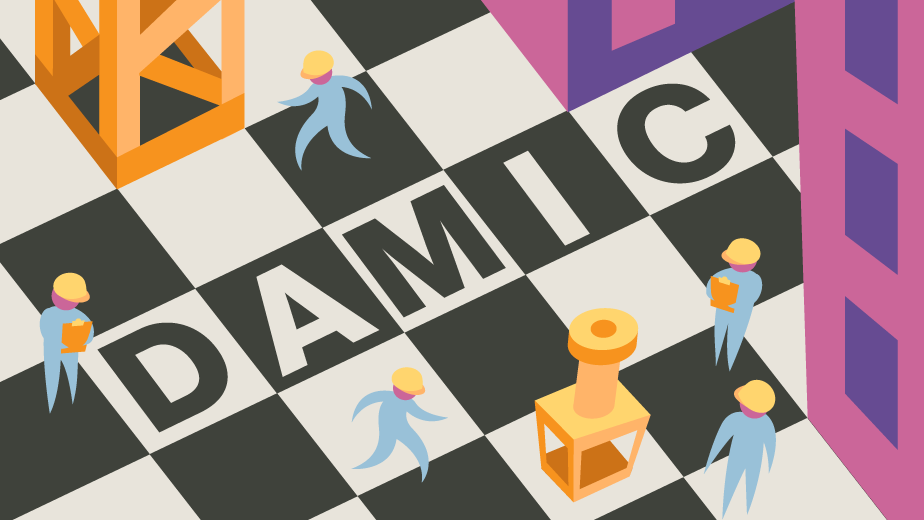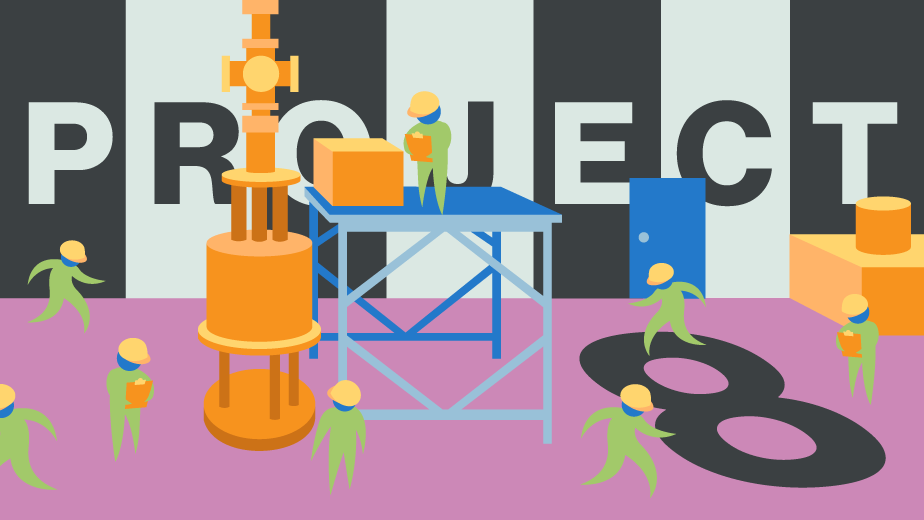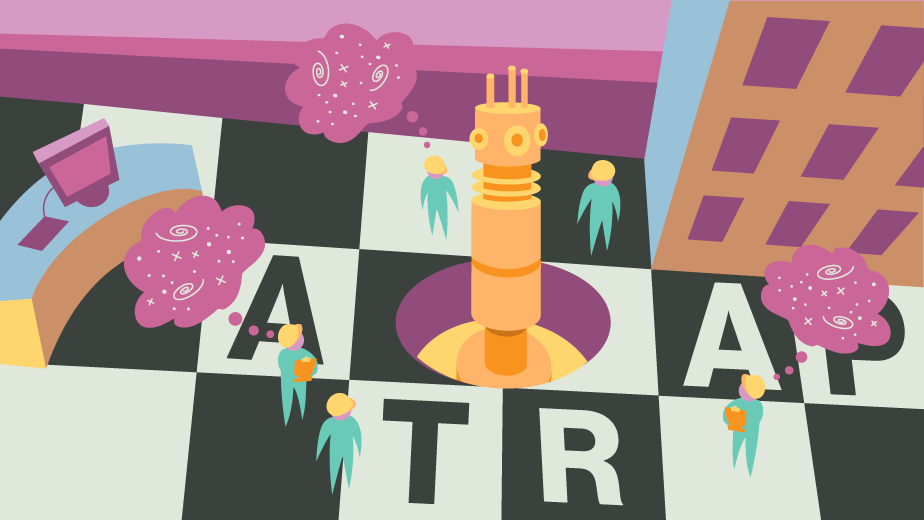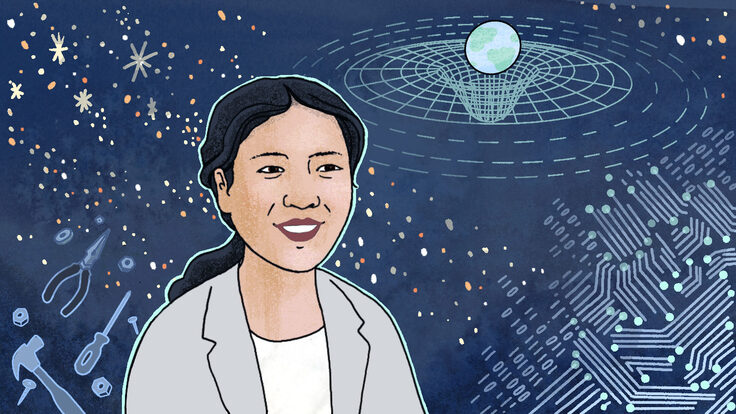Particle physics is the realm of billion-dollar machines and teams of thousands of scientists, all working together to explore the smallest components of the universe.
But not all physics experiments are huge, as the scientists of DAMIC, Project 8, SPIDER and ATRAP can attest. Each of their groups could fit in a single Greyhound bus, with seats to spare.
Don’t let their size fool you; their numbers may be small, but their ambitions are not.
Smaller machines
Small detectors play an important role in searching for difficult-to-find particles.
Take dark matter, for example. Because no one knows what exactly dark matter is or what the mass of a dark matter particle might be, detection experiments need to cover all the bases.
DAMIC is an experiment that aims to observe dark matter particles that larger detectors can’t see.
The standard strategy used in most experiments is scaling up the size of the detector to increase the number of potential targets for dark matter particles to hit. DAMIC takes another approach: eliminating all sources of background noise to allow the detector to see potential dark matter particle interactions of lower and lower energies.
The detector sits in a dust-free room 2 kilometers below ground at SNOLAB in Sudbury, Canada. To eliminate as much noise as possible, it is held in 10 tons of lead at around minus 240 degrees Fahrenheit. Its small size allows scientists to shield it more easily than they could a larger instrument.
DAMIC is currently the smallest dark matter detection experiment—both in the size of apparatus and the number of people on the team. While many dark matter detectors use more than a hundred thousand grams of active material, the current version of DAMIC runs on a mere five grams and the full detector will have 100 grams. Its team is made up of around ten scientists and students.
“What’s really nice is that even though this is a small experiment, it has the potential of making a huge contribution and having a big impact,” says DAMIC member Javier Tiffenberg, a postdoctoral fellow at Fermilab.
Top to bottom engagement
In collaborations larger than 100 people, specialized teams usually work on different parts of an experiment. In smaller groups, all members work together and engage in everything from machine construction to data analysis.
The 20 or so members of the Project 8 experiment are developing a new technique to measure the mass of neutrinos. On this experiment, moving quickly between designing, testing and analyzing an apparatus is of great importance, says Martin Fertl, a postdoctoral researcher at the University of Washington. Immediate access to hardware and analysis tools helps these projects move forward quickly and allows changes to be implemented with ease.
“A single person can install a new piece of hardware and within a day or so, test the equipment, take new data, analyze that data and then decide whether or not the system requires any additional modification,” he says.
Project 8 aims to determine the mass of neutrinos indirectly using tritium. Tritium decays to Helium-3, releasing an electron and a neutrino. Scientists can measure the energy emitted by these electrons to help them determine the neutrino mass.
“It was satisfying for us all when the first data came out and we were seeing electrons,” says UW postdoc Matthew Sternberg. “We basically all took a crack at the data to see what we could pull off of it.”
A fertile training ground
Small collaborations can be especially beneficial to fledging scientists entering the field.
Space-based projects carry a high cost and risk that can prevent students from being very involved. Balloon-borne experiments, however, are the next best thing. By getting above the atmosphere, balloons provide many of the same benefits for a fraction of the price.
In the roughly 30-member collaboration of the balloon-borne SPIDER experiment, graduate students played a role in designing, engineering, building and launching the instrument, and are now working on analysis.
“It’s great training for graduate students who end up working on large satellite experiments,” says Sasha Rahlin, a graduate student at Princeton University.
SPIDER is composed of six large cameras tethered to a balloon and was launched 110,000 feet above Antarctica to orbit the Earth for about 20 days in search of information about the early universe. Using measurements from this flight, researchers are looking for fluctuations in the polarization of cosmic background radiation, the light leftover from the big bang.
“When the balloon went up, all of us were in the control room watching each sub-system turn on and do exactly what it was supposed to,” Rahlin says. “There was a huge moment of ‘Wow, this actually works.’ And every component from start to finish had grad student blood, sweat and tears.”
Around 20 people went down to McMurdo Station in Antarctica to launch SPIDER with the help of a team from NASA that launches balloon experiments in several locations around the world. According to Zigmund Kermish, a postdoctoral fellow at Princeton University, being a small group sometimes means having to optimize time and manpower to get tasks done.
“It’s been really inspiring to see what we do with limited resources,” said Kermish. “It’s amazing what motivated graduated students can make happen.”
Big ambitions
Scientists on small collaborations are working toward big scientific goals. The ATRAP experiment is no exception; it will help answer some fundamental questions about why our universe exists.
Four members of the collaboration are located at CERN, where the apparatus is located, while only 15 people are involved overall.
ATRAP creates antihydrogen by confining positrons and antiprotons in a trap, cooling them to near absolute zero until they can combine to form atoms. ATRAP holds these atoms while physicists make precise measurements of their properties to compare with hydrogen atoms, their matter counterparts.
This can help determine whether nature treats matter and antimatter alike, says Eric Tardiff, a Harvard University postdoc at CERN. If researchers find evidence for violation of this symmetry, they will have a potential explanation for one of physics’ largest mysteries—why the universe contains unequal amounts of antimatter and matter particles. “No experiment has explained [this asymmetry] yet,” he says.
Think small
Small experiments play an important role in particle physics. They help train researchers early in their career by giving them experience across many parts of the scientific process. And despite their size, they hold enormous potential to make game-changing scientific discoveries. As Margaret Mead once said, “Never doubt that a small group of thoughtful, committed citizens can change the world.”











